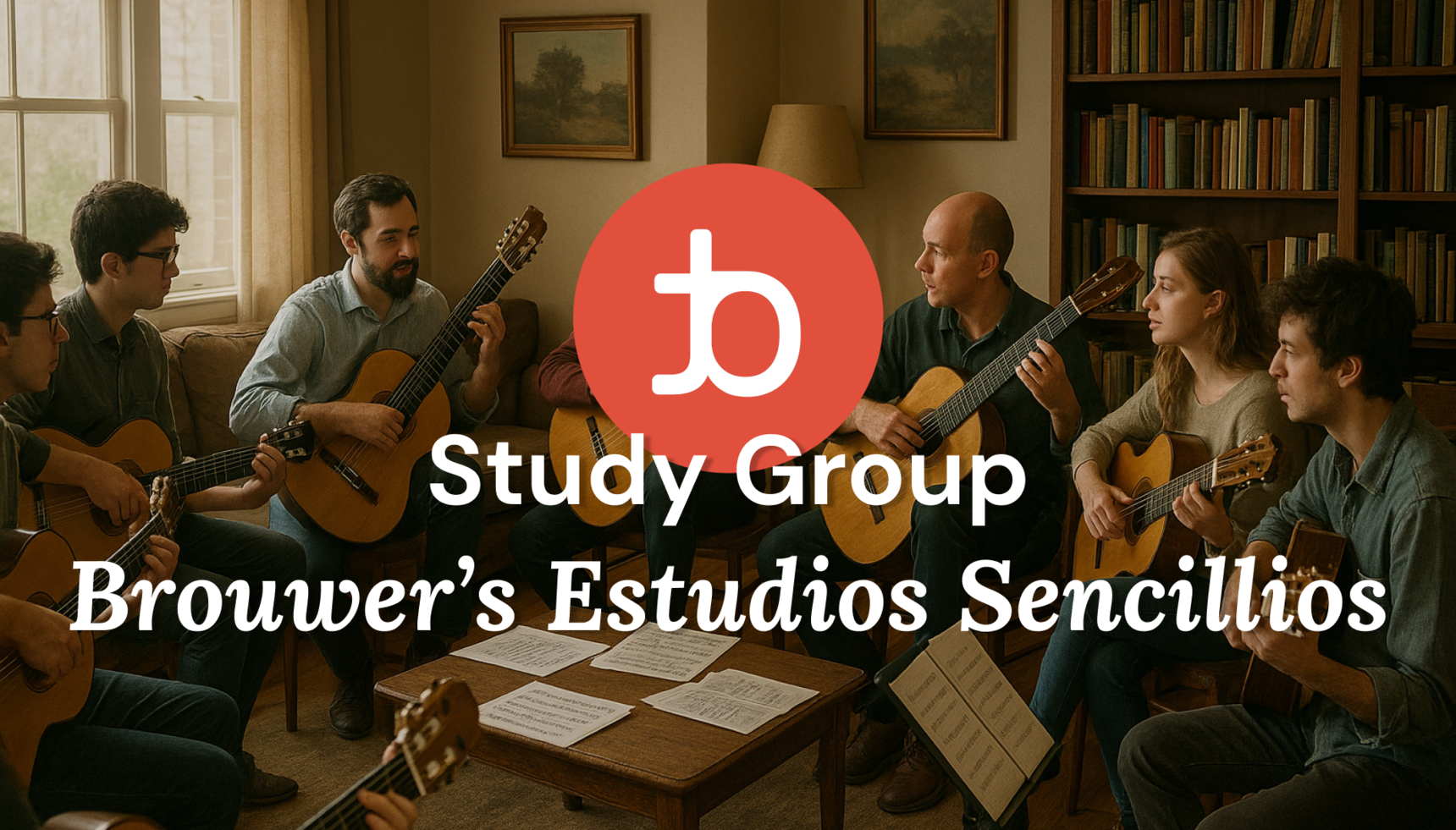Leo Brouwer's Estudios Sencillios!

Welcome to our next Study Group — a collaborative, peer-led dive into a beautiful piece of music over the course of two weeks.
This time, we’re diving into the methodical riches of Brouwer’s Estudios Sencillos 1–10!
This is not a course or a class — it’s a space for mutual exploration, discussion, and shared progress. I’ll be learning the piece alongside you (again — it’s been a while!), and I’m excited to discover new things together.
🗓️ What to expect:
Over the next two weeks, we’ll focus on:
🎯 Fingerings and technique
🎯 Methodical background
🎯 Interpretation and expressive choices
🎯 Your own questions and perspectives!
We’ll also meet for two live Zoom sessions to share progress, chat about challenges, and nerd out over all things Brouwer.
✅ How to participate:
Sign up through the Forum
Grab your score of the Estudios Sencillos
Introduce yourself below!
Join the prompts and discussion
Share your thoughts, ideas, or a clip of your playing
📅 Live Zoom Calls:
🗓️ Dates: July 28th – August 8th
📫 Sign-Up
425 replies
-
I recorded Brouwer 9. Well, at least it shows where I'm at with it right now. Thanks for your helpful videos. I'll continue to refer to them as I work on this.
-
For this last day of the Brouwer Study Group (I think it was supposed to be a 2-week thing), I wanted to hack together a quick Brouwer Estudio 20. I am not satisfied with this performance, as I always get nervous in front of the camera, and I felt my hands shaking a bit, but at least it gives you folks an idea of what it is supposed to sound like. My old fingers won't move at anything more than 90 bpm, which is nowhere near the tempo that Patrik Kleemola plays at ... but I think that the slower tempo brings out the notes better. Brouwer says that this piece should take between 2:20 and 2:30, so my 2:50-ish is slower than what Uncle Leo wants.
I hope that some of you might want to tackle this piece, and we end up working on it in a mini study session.
Learning this piece has been fun and challenging. I still wish I had my old marimba, because this is a wonderful study for mallets.
I just got my NYC Guitar Orchestra music for the upcoming season, so I cannot put time into Brouwer for now. -
As I'm not going to be able to be present at the zoom call, I want to leave here my many thanks to all of you for all your work and every word you have shared! These study groups are a great idea and I'm already looking forward to the next one!!
-
So, for those of you who missed the meeting today, let it slip that the next study group will be Prelude No. 1 by Villa-Lobos. I have not played this, but I am currently in the process of learning Prelude No. 3.
And when Martin theorized that most of the folks here have already played that one ... well, not me. At 2-1/2 years on the guitar, I feel like I am a babe in the woods here. But I will try to learn VL Prelude 1.
Have you folks watched the masterclasses on the Villa-Lobos Preludes given by Julian Bream? It's an amazing hour of pedagogy. -
I watched a really good lesson with Jonathan Leathwood on voicing, and he spends a lot of time talking about Estudios Sencillos #2. He points out that just because it's a "coral," it doesn't mean all of the voices MUST be even throughout. There are some places where you might want to bring out certain voices, like when the f changes to an f#. He goes into other examples like the Bach Chaconne and some Sor studies, and gives some good exercises for how to practice this, as well as how to ensure the voices are even when you want them to be.
Attached is his video as well as an example I recorded to see just how different it sounds when different voices are brought out: first the top, then the middle, then the bottom (which is the only one I might use when playing this).
This is old news for some I'm sure, but it really opened my eyes to some new possibilities.

